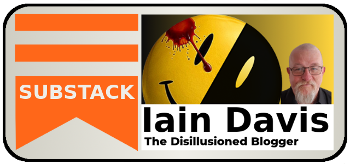The Problem: Many economists are increasingly becoming aware that there is a major problem with this model of how our economy works. In other words, some economists are starting to realize that our whole perspective of how economics functions is flawed.
The problem is that, in order for these mechanisms to work, there needs to be a supply of money in the economy. Government monetary policy is supposed to manage this supply through the trade of government bonds. Theoretically when the government wants to put more money into the economy the central state banks (eg the Federal Reserve in the U.S or the Banks of England in the U.K) start buying up government bonds held by the banks. In doing so they increase the money supply to the banks and increase the value of the bonds. This supposedly increases the amount of money in the economy and suppresses interest rates. This is intended to encourage more consumers and businesses to buy and invest thereby increasing demand and, subsequently, output and GDP.

The other way that governments can effect the economy is through the use of ‘fiscal policy.’ This refers to government ability to increase or lower both taxation and spending. The theory is that by increasing taxation and reducing spending the government can reduce disposable income, decrease demand and cause the economy to contract or ‘slow down.’ On the other hand, by reducing taxation and increasing spending that can stimulate the economy. In theory.
The problem is that central banks do not control the flow of money in the economy and fiscal control by governments is a myth. Over 97% of the money in the real economy is created by banks when they make loans. This is a form of electronic money printing and is fueling the other big problem of wealth inequality. Current ‘neoclassical’ economic theory fails to adequately address this issue.
Wealth inequality is so wide that, in the UK for example, the richest 5 families have the same amount of wealth as the entire poorest 20% of the population. Furthermore the richest 1% of the population have more wealth than the poorest 60%. In fact the richest 20% control over 60% of all the money in the economy.
So, not only do private banks control the creation and distribution of money in the economy its is clear that only a minority of the richest people are actually benefiting from it. This seriously brings into question the effectiveness of government monetary and fiscal policy. Furthermore current economic theory relies upon a concept called the ‘trickle down effect.’ This theory, which is widely accepted by the economists who advise policy makers, states that the wealth of the richest is always spent in the wider economy and therefore others receive the benefit of that money. Consequently, they argue, we would expect wealth inequality to be reducing as the richest spend their money and the less well off earn their share of it.
But wealth inequality is actually growing at an alarming rate and has consistently done so over the last 30 years. The money held by the richest is not ‘trickling down’ but is rather being ‘taken out’ of the wider economy. Our elected governments simply have no control over this flow of money at all.
So in a micro economic analysis of this situation individuals and small to medium size businesses have such an insignificant proportion of the wealth that they simply do not effect market forces. Similarly, because corporate and large scale financial interests (banks) utterly control the market the concept of opportunity costs at a micro economic level is a misnomer. The market is in “market failure” and is essentially a ‘monopoly’ controlled by huge financial institutions. Individuals and businesses thrive or fail dependent upon their ability to service debt. They do not compete in the market at all.
Similarly a macro economic analysis which in demonstrates some worrying trends that most economists overlook completely. For example inflation, far from being a product of economic activity in the larger economy, is actually a method of control operated by global corporations. For example, at the time of writing (March 2015) inflation is at an all time low. However this is not because demand for products and services is low (though their has been some reduction if China) but rather because those who control oil production have literally flooded the market and reduced the oil price by 60% in 18 months. A macro economic analysis that does not factor in the manipulation of global markets by corporate oligarchies is pointless.
The oil price would appear to have been intentionally deflated in order to stimulate increased consumption (this is the opposite of a macro economic analysis that would suggest inflation is the product of economic activity.) As that consumption rises so will lending and debt. In about 18 months the oil price will surge again and those who have extended their debt burden will be consumed by same supreme capitalists who control the oil price in the first place.
There is an increasing realization that our economies are actually totally dysfunctional and we can prove this largely by understanding the difference between micro and macro economics. all we need to do is factor in the activities of the top 1% and a micro and macro economic analysis clearly demonstrates what is really going on in the economy. However as many leading economists who advise the puppet governments of the corporations do not acknowledge the top 1% control of all markets, their analysis is both flawed and contributes to the continuation of failed economic policies that are actually designed to exacerbate inequality.





Be the first to comment on "Difference Between Micro And Macro Economics – Part 4"